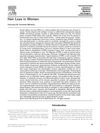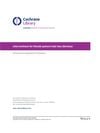Dutasteride + Minoxidil – 11 Weeks In, No Shed Yet. When Should I Expect It & What NW Am I? Is this regrowth? 11/12/2025
A 22-year-old is using dutasteride and minoxidil for hair loss, focusing on the crown area, and has not experienced shedding after 11 weeks. They are seeking advice on when shedding might occur and what Norwood level they might achieve.
View this post in the Community →
Similar Community Posts Join
6 / 1000+ resultscommunity Start when you first notice hair loss
Start hair loss treatment early. Finasteride stops hair loss; dutasteride and oral minoxidil slightly improve thickness.
community People with ALOT of shedding on Finastride : My 1.5 year thoughts and UPDATE
The user experienced continuous hair shedding for 16 months while on finasteride, with periods of improvement. They also used T Gel shampoo and noticed a reduction in hair loss symptoms after 18 months, including the return of their sex drive and normal hair texture.
community Age 18 vs Age 25, the importance of starting early
An 18-year-old began using Finasteride and Topical Minoxidil for hair loss, later switching to Oral Minoxidil and Dutasteride by age 25. The conversation emphasizes early treatment, potential side effects, and differing opinions on medication effectiveness.
community I understand this topic has been discussed countless times, but hair loss is the most brutal experience for men.
Hair loss significantly affects men's confidence and mental health. Common treatments include finasteride, dutasteride, and minoxidil, with some considering hair transplants.
community Hair Transplant Results after 6 months . 3500 grafts. NW 6
The user underwent a hair transplant with 3500 grafts and has been using Finasteride and Minoxidil for 5.5 months, seeing some growth. They plan to have a second transplant for the crown area and are seeking opinions on future results and density improvement.
community 6th month. Should I switch to dutasteride?
The user has been using oral finasteride, topical minoxidil, and tretinoin cream for hair loss, with positive progress noted after six months. They are advised to continue their current regimen and consider additional treatments like derma rolling, while being cautious about switching to dutasteride due to potential side effects.
Related Research
6 / 1000+ results
research Artificial Intelligence in Patient Education for Androgenetic Alopecia: A Comparative Study of ChatGPT, Gemini, and Deepseek R1
ChatGPT 4.0 and Gemini 1.5 Flash are effective for educating patients about androgenetic alopecia, while Deepseek R1 is less reliable.

research Androgenetic Alopecia: Update on Etiology, Pathophysiology, Diagnosis, and Treatment
Androgenetic alopecia is influenced by various factors and can be treated with medications, procedures, and non-drug methods.
research Clinical Use of Extracellular Vesicles in the Management of Male and Female Pattern Hair Loss: A Preliminary Retrospective Institutional Review Board Safety and Efficacy Study
Extracellular vesicles may effectively treat hair loss with minimal side effects.

research Hair Loss in Women: Comprehensive Overview and Treatment Options
Effective hair loss treatment in women requires correct diagnosis and can include medications like minoxidil, antiandrogens, and treatments for underlying conditions like PCOS.

research Female Androgenetic Alopecia: An Update on Diagnosis and Management
FAGA diagnosis uses blood tests and trichoscopy, with treatments like topical minoxidil, oral anti-androgens, and hormone-modulating drugs.

research Interventions for Female Pattern Hair Loss
Topical minoxidil helps treat female pattern hair loss, but more research needed for other treatments.